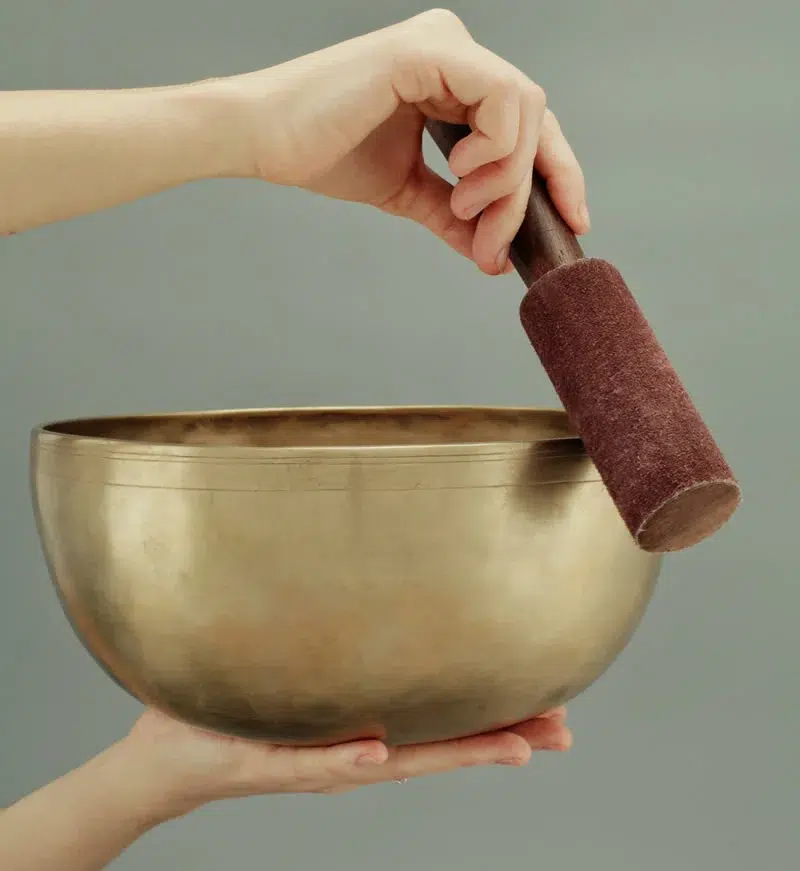As a sound healing therapist, I’ve had the opportunity to explore various aspects of sound therapy, including the use of singing bowls.
While many individuals find the soft vibrations and gentle tones of these instruments to be incredibly relaxing and therapeutic, others may experience discomfort or even pain in their ears.
In this section, we’ll take a closer look at why singing bowls might hurt your ears and what you can do to prevent it.
Understanding the mechanics of singing bowls and the potential causes of ear sensitivity can help you better manage any discomfort, so you can still enjoy the benefits of this powerful tool.
Key Takeaways:
- Singing bowls can cause ear pain or discomfort in some individuals.
- The volume and intensity of the sound produced, individual ear anatomy, and pre-existing ear conditions may contribute to ear sensitivity.
- Understanding the mechanics of singing bowls and the potential causes of ear sensitivity can help prevent ear pain while still enjoying the benefits of this tool.
Content
Understanding the Mechanics of Singing Bowls

Before diving into the reasons why singing bowls may cause ear discomfort, it’s essential to understand how they produce sound.
Singing bowls are typically made of metal and are shaped like a bowl with an inverted bottom. To produce sound, the bowl is struck with a mallet or rubbed with a wooden stick.
The vibration caused by the impact or friction creates sound waves that travel through the air and into the ear. The sound waves stimulate the auditory nerve, which sends signals to the brain to interpret the sound.
The frequency and intensity of the sound created by singing bowls can vary depending on factors such as the size and thickness of the bowl and the force with which it is struck or rubbed. The sound can range from a soft, delicate tone to a loud, deep tone.
It’s important to note that the vibrations produced by singing bowls not only travel through the air but also through physical contact. This means that holding the bowl against your ear or placing it on your body can also produce vibrations that travel directly to your inner ear.
The mechanics of singing bowls can help to explain why some individuals may experience ear discomfort or make you cry when exposed to them. The intensity and frequency of the sound, as well as the proximity of the bowl to the ear, can all contribute to ear sensitivity.
Understanding the Mechanics of Singing Bowls
“The sound waves stimulate the auditory nerve, which sends signals to the brain to interpret the sound.”
Having a basic understanding of the mechanics of singing bowls can help to identify potential causes of ear discomfort and inform strategies for preventing it. In the following section, we will explore the different factors that can contribute to ear sensitivity when using singing bowls.
Factors Contributing to Ear Sensitivity
There are several factors that can contribute to ear sensitivity when using singing bowls. It’s important to understand these factors in order to prevent discomfort or pain. One factor is the volume and intensity of the sound produced by the singing bowl. If the sound is too loud or intense, it can cause ear sensitivity and even damage the ear.
Another factor is individual ear anatomy. The shape and size of your ear can affect how you perceive sound and how much pressure is placed on the eardrum. Additionally, any pre-existing ear conditions such as ear infections or hearing loss can heighten sensitivity to sound and cause discomfort when using singing bowls.
Volume and Intensity
Singing bowls produce sound through vibrations, which can create pressure waves that travel through the air and into your ears. If the volume or intensity of the sound is too high, it can cause discomfort or pain in the ears. To prevent this, it’s important to adjust the volume of the singing bowl to a comfortable level. You can also try using ear protection, such as earplugs or noise-canceling headphones, to reduce the intensity of the sound.
Ear Anatomy
The shape and size of your ear can affect how you perceive sound and how much pressure is placed on the eardrum. Some individuals may have a narrower or more curved ear canal, which can increase sensitivity to sound and cause discomfort when using singing bowls. Additionally, if you have any abnormalities in the ear structure, such as a perforated eardrum or earwax buildup, it can exacerbate ear sensitivity and cause pain. If you have any concerns about your ear anatomy, it’s important to consult with a healthcare provider or audiologist.
Pre-existing Ear Conditions
If you have any pre-existing ear conditions, such as ear infections, hearing loss, or tinnitus, it can heighten sensitivity to sound and cause discomfort when using singing bowls.
It’s important to be aware of any underlying conditions and take precautions to prevent further irritation or damage. If you consistently experience ear pain or discomfort when using singing bowls, it’s important to seek professional advice from a healthcare provider or audiologist.

Common Ear Discomfort Symptoms
If you’re experiencing discomfort or pain in your ears after using singing bowls, it’s important to recognize the symptoms so that you can take appropriate action. Here are some common signs that you may be experiencing ear discomfort:
- Ear pain or aching
- Ear fullness or pressure
- Ear ringing or buzzing
- Headache or dizziness
- Nausea or vomiting
If you experience any of these symptoms, it’s important to take a break from using singing bowls and give your ears some rest. Continuing to expose your ears to sound vibrations can exacerbate the discomfort and potentially cause further damage.
“If you experience any symptoms of ear discomfort, it’s important to take a break from using singing bowls and give your ears some rest.”
If you have any pre-existing ear conditions, such as tinnitus or hearing loss, you may be more susceptible to experiencing ear discomfort when using singing bowls. It’s important to be mindful of your individual ear anatomy and any potential sensitivities you may have.
Remember, while singing bowls can be a powerful tool for relaxation and healing, it’s important to use them safely and mindfully. Recognizing and addressing any ear discomfort symptoms is crucial for ensuring a positive and beneficial experience.
Preventing Ear Pain from Singing Bowls

If you are experiencing ear pain or discomfort when using singing bowls, there are several practical steps you can take to prevent further discomfort. Here are some effective ways to reduce the risk of ear pain:
- Adjust the volume: Lower the volume of the singing bowls to better suit your ears. Start with a lower volume and gradually increase it until you find a level that is comfortable for you.
- Use ear protection: Wear earplugs or noise-canceling headphones to reduce the intensity of the sound. This is especially important if you are playing bowls for an extended period.
- Modify the distance: Move the singing bowls farther away from your ears to reduce the intensity of the sound. Experiment with different distances until you find a comfortable level.
- Consider alternative frequencies: Try using singing bowls with different frequencies, as some may be less irritating to your ears than others. For example, bowls with lower frequencies may be more soothing to some individuals than higher-frequency bowls.
By following these tips, you can enjoy the therapeutic benefits of singing bowls without the risk of ear pain or discomfort.
“Lower the volume of the singing bowls to better suit your ears. Start with a lower volume and gradually increase it until you find a level that is comfortable for you.”
Seeking Professional Advice
If you consistently experience ear pain or discomfort while using singing bowls, it’s important to seek professional advice. Consulting with an audiologist or healthcare provider can help identify any underlying issues and provide personalized recommendations. They can also perform tests to assess your hearing health and determine if any damage has occurred.
Ignoring ear pain or discomfort can lead to more significant hearing issues down the road, so it’s crucial to address any concerns as soon as possible. Remember, protecting your hearing is essential to maintaining a high quality of life.
Don’t hesitate to seek advice from a professional, as they can help ensure that you can still enjoy the benefits of singing bowls without causing harm to your ears.
Exploring Alternative Sound Therapy Options
If singing bowls continue to cause discomfort or pain in your ears, there are alternative sound therapy options you can consider. These techniques and instruments provide similar healing benefits without the risk of ear sensitivity.
Tuning Forks
Tuning forks produce a single or set of frequencies that can be used to balance energy and promote relaxation. They are easy to use and can be applied directly to the body or placed near the ears.
Gongs
Gongs produce a full spectrum of sound that can be used for meditation, stress relief, and enhancing creativity. They are played by striking the instrument or using a mallet to create a sustained vibration.
Crystal Singing Bowls
Crystal singing bowls produce pure tones that resonate with different chakras in the body. They are made from quartz crystal and are played by striking the bowl or using a mallet to create a sustained vibration.
These alternative sound therapy options provide a range of healing benefits and can be used as a complement or alternative to singing bowls. Experiment with different techniques and instruments to find what works best for you.
Conclusion
Overall, there are a variety of reasons why do singing bowls hurt my ears. However, by understanding the mechanics of singing bowls and recognizing the factors that contribute to ear sensitivity, we can take steps to prevent such discomfort while still reaping the benefits of sound therapy.
If you consistently experience ear pain or discomfort when using singing bowls, it is important to seek professional advice. An audiologist or healthcare provider can help identify any underlying issues and provide personalized recommendations.
Additionally, there are alternative sound therapy options that you can explore if singing bowls continue to cause ear sensitivity. By considering other instruments and techniques, you can find a method that works best for you and ensures a safe and enjoyable experience.
Remember, taking care of our ears is essential to our overall health and well-being. With a little bit of awareness and consideration, we can enjoy the soothing benefits of sound therapy without sacrificing our ear health.
